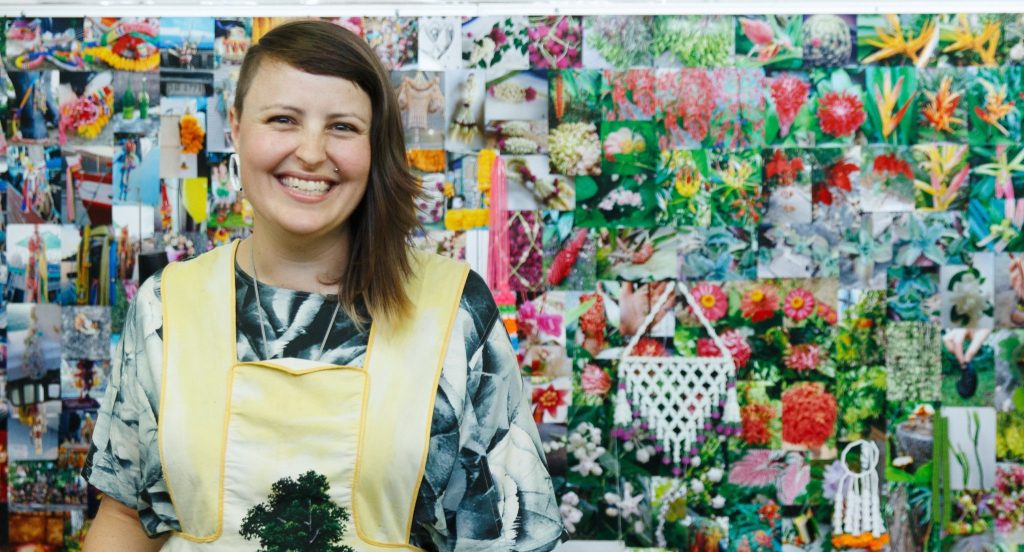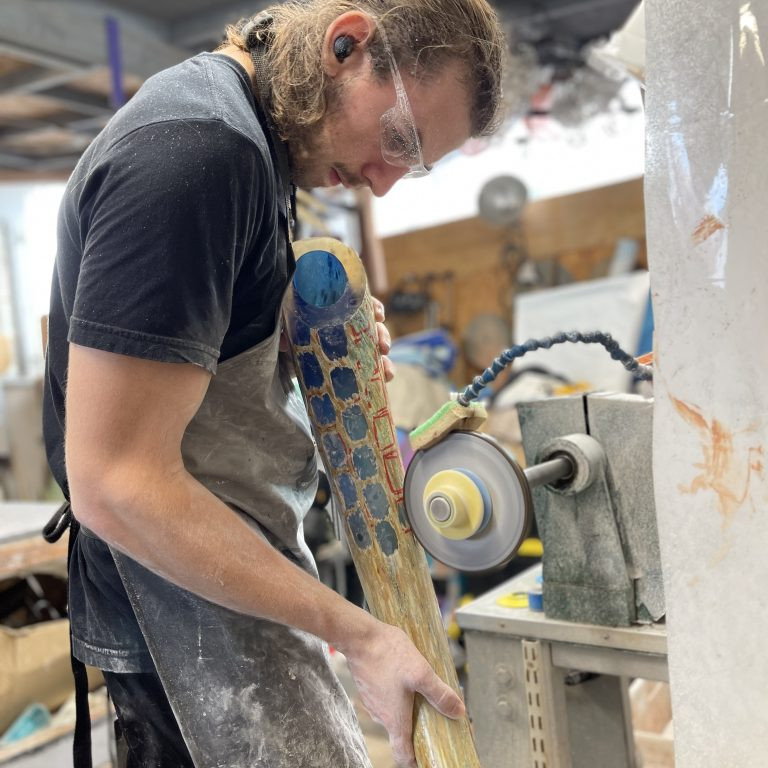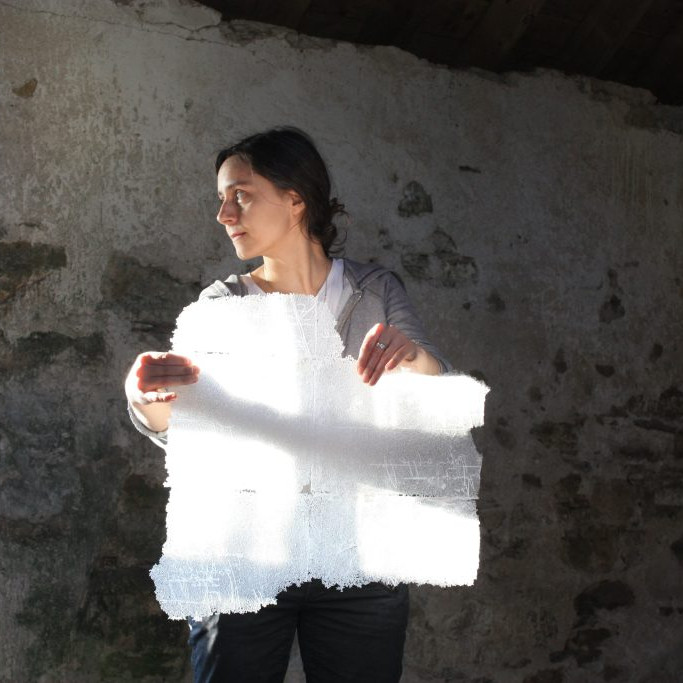Jess Dare Glass / Jewellery Artist - South Australia, Australia
How did you get from playing in the yard with berries and bugs to interpreting them in glass?
There are more than 25 years of experiences, opportunities, adventures, misadventures, love and heartbreak that fuel the answer to that question.

Conceptual Flowering Plant Series, 2013 Flamework Glass, Photo Grant Hancock
But the impetus behind creating my first major collection of glass plants in 2013 was the passing of my dear Grandfather, Dean Hosking. He was an incredibly passionate gardener and after he died in 2011, everyone in our family became passionately obsessed with their gardens. It was as if they were returning to the earth to be close to him. This collection of glass plants became my garden, in reflection it was a very cathartic, healing process.

Conceptual Flowering Plant Series, 2013 Flamework Glass, Photo Grant Hancock
Explain about your residency in Bangkok, Thailand, in relations to their national floral garlands?
In 2014 I was granted an Asialink artist residency in Bangkok, Thailand, supported by Arts SA and hosted by Atelier Rudee, International Academy of contemporary jewellery. The main objective was to learn the traditional craft of Phuang Malai (floral garlands) and to translate this into my work using glass and metal. Phuang Malai is traditionally an ephemeral craft using flowers strung in different patterns and formations for different meanings and occasions.
I was initially drawn to this craft as it is used to honour “seen and unseen beings” alike, echoing the themes of memory and honouring past loved ones that is core to my exhibition work.

Lesson in Pak Kret: showing elements ready to assemble. Hand dyed orchid petals, crown flower, Jasmine. Photo Jess Dare.
My residency took me all over Thailand, from moulding cow dung in a remote village in the province of Ubon Ratachathani to casting bronze bells the same way that has been done for over 4000 years, to working with delicate orchids in the Museum of Floral culture. Threading hand-cut leaves in Pak Ret. Planting rice, ‘back to the sun, face to the earth’. To holding up Traffic on a photo shoot in the streets of Bangkok. Even a short week-long residency with famed ceramic artists Wasinburee Supanichvoraparch in Ratchburi at his family’s ceramic factory, Tao Hong Tai.
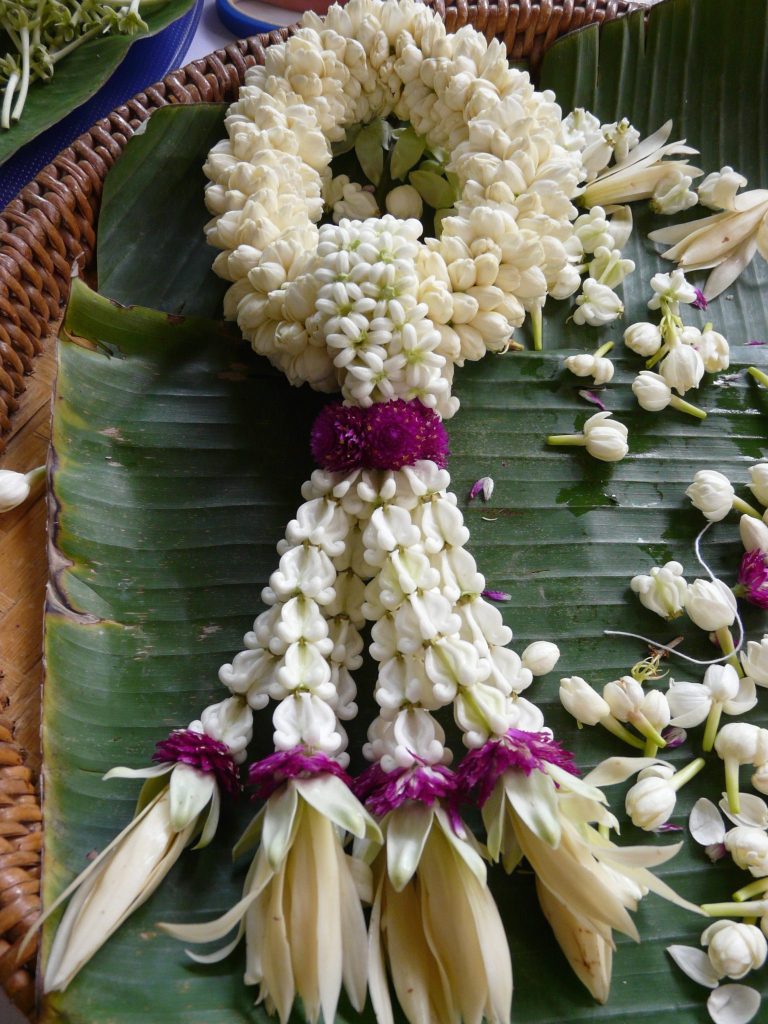
First traditional Phuang Malai I made using Jasmin, Crown flowers, Amaranth and Magnolia. Meaning: Never ending love. 2014, Photo Jess Dare
The residency, the experiences I had and the people I met, opened a new world for me, a rich source of inspiration, a new way of working and thinking about my work. I feel like the experience will feed my practice for many years to come. I actively chose to expand my vocabulary and my practice by travelling to another country to experience new skills and way of making, immerse myself in another culture. And I would encourage anyone to undertake an artist residency, to extend your physical borders, push your personal boundaries and comfort zone, challenge yourself, question your making, explore the unknown and then see what happens next….
Explain the importance of Garlands throughout the world?
Yikes this is a huge question! I can only speak from the experiences that I had in Thailand and by no means am I an authority on Garlands.
There are several shapes and styles of Phuang Malai with a variety of functions that fall in to the 3 main categories: offering, decoration and gift. The functions range from offerings to Buddha or for hanging around the neck or the wrist or to hold in the hand, to being tethered to boats, cars and buses for a safe journey home, there are types for ceremonies like wedding and funerals, whilst some to simply hang in the windows of houses for scenting the breeze with jasmine. I was particularly interested in the role that they play in paying respect, and as offerings.
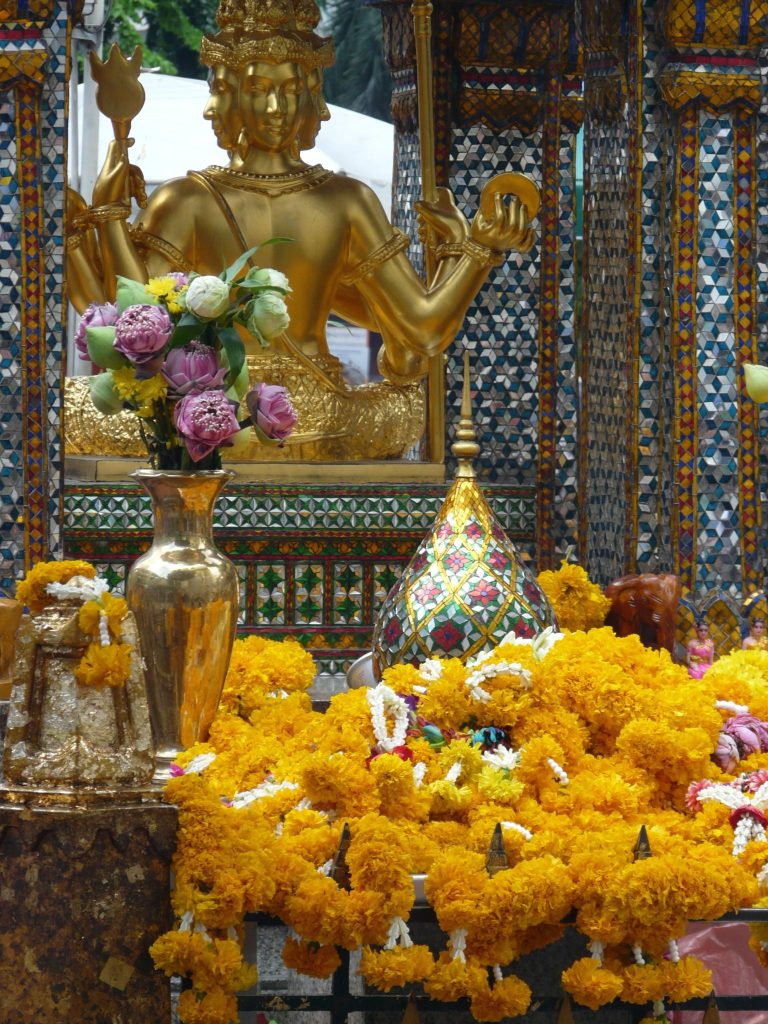
Offerings at Erawan Shrine, Bankok, 2014, Photo Jess Dare
I love Phuang malai, I appreciate them aesthetically as well as sentimentally and spiritually but if people are interested in reading more about garlands I would highly recommend the Garland website (www.garlandmag.com) where you will find articles about the stories behind what people make alongside numerous articles about garlands and leis from all around the world.
Personally, I feel that they break down barriers, if you have ever been given a garland perhaps you will share this sentiment. I have always felt humbled, a tradition steeped in rich history, something hand crafted, especially the Phuang malai of Thailand made of fresh flowers which are literally wilting as they are being strung, they are not meant to last, they are meant for just a moment.
Explain the meaning of flowers and how this effects your work?
Flowers mean different things to everyone. Historically there is a rich language, symbolism and meaning of flowers. And whilst sometimes I reference these traditional meanings I am very much a sentimental gardener and maker, so I often use flowers which have a personal significance to me, for example the Magnolia. This is a flower that comes up time and time again in my life and also my work. It is one of the last trees I planted with my grandfather, it is used often in Phuang malai at the base of the uba and is the floral symbol of Shanghai where I did a residency in 2015.
In general, I use flowers as a metaphor for the transience of life. To me flowers are a constant reminder that life is ephemeral, ever-changing, momentary and precious.
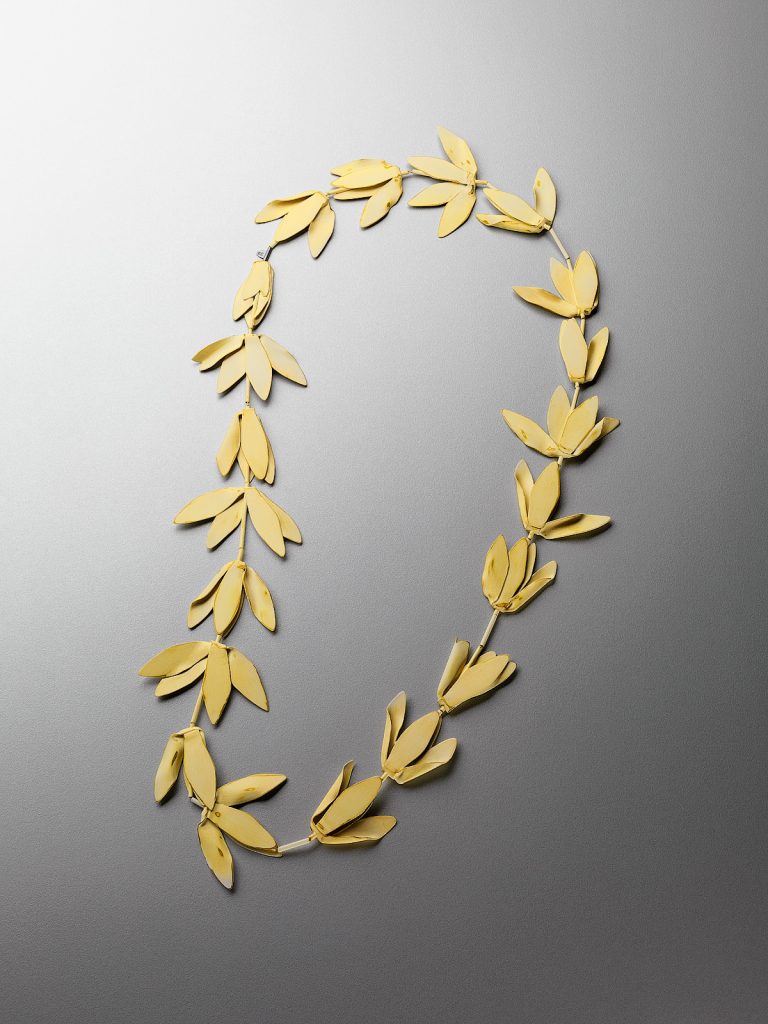
Wilted, powder coated brass, stainless steel cable, sterling silver, 2016
Photo Grant Hancock
Can you expand on the Jean Francois Turpin’s conceptual flowering plant of 1837?
Turpin’s Conceptual flowering plant of 1837 was a type of teaching aid popular in the 19th century. It depicts an imaginary plant that incorporates the characteristics of many diverse flowering plants, with various kinds of stamen, leaves, stems, bulbs, tubers and even leaf gals.
The series of glass plants I created in 2013 entitled conceptual flowering plants were plants drawn from my imagination and my memory of plants, they incorporated elements of different plants and yet they still felt familiar. I loved hearing people point out different plants and vehemently explain that that plant was a lavender or a snowberry etc.
Please give a brief explanation about the technique of lampworking and how you use it in your work ?

Flameworking demonstration, photo Annalies Hofmeyer
‘As a jeweller I have always been drawn to the miniature’ discuss this comment.
As a Jeweller I work on a very small scale, generally working in a zone no more than 300mm from the tip of my nose. It’s a small field, it is a private, intimate space, my own little world.
I am drawn to the minute details of things as it’s the scale that is familiar, comfortable.
My fiancé finds it infuriating to go for walks with me as I am always one hundred steps behind him, taking photos of little things, little details, plants etc I find along the way.
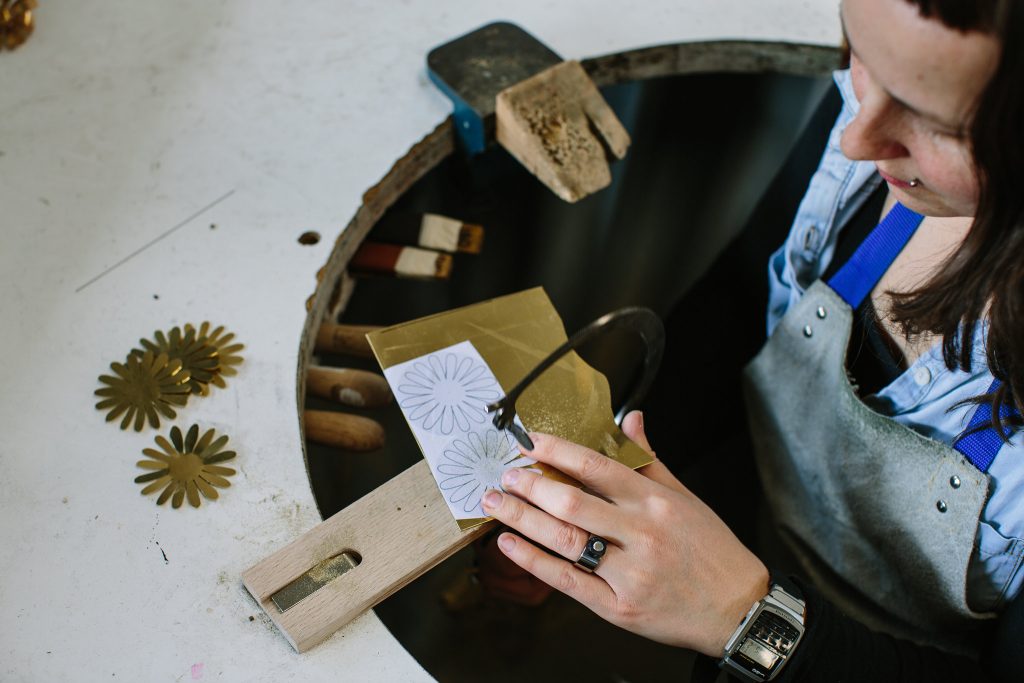
Working at the bench, photo Jessica Clark
Discuss your involvement in the memorial for the 2014 Martin Place siege?
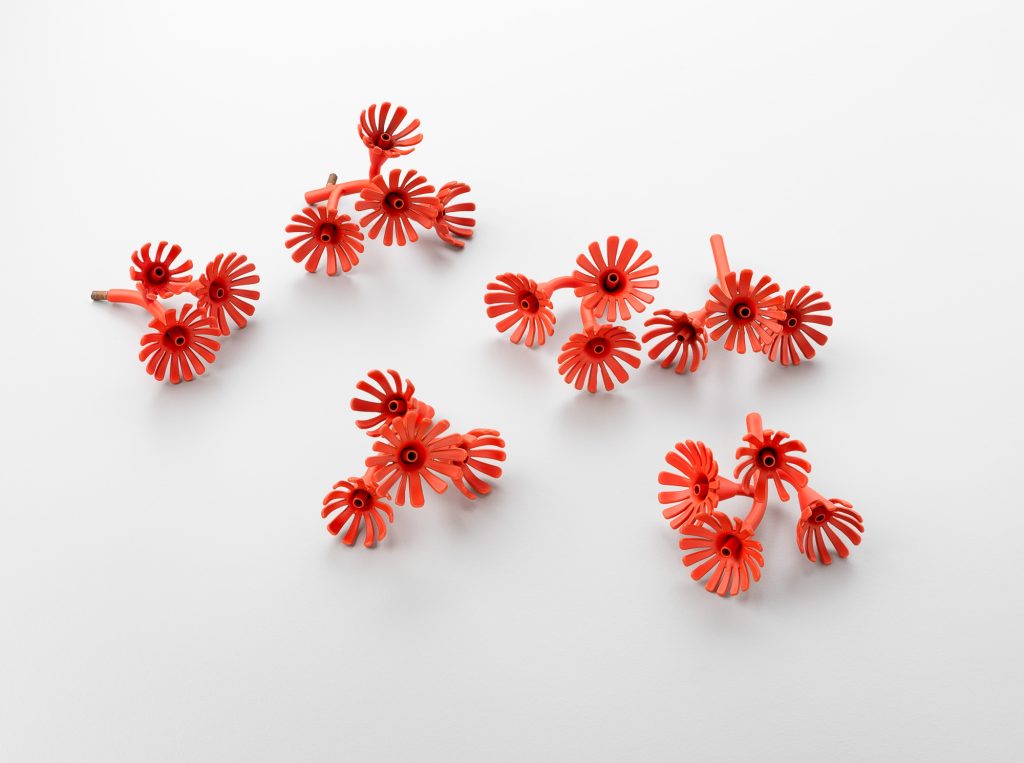
Flowering Gum, photo Grant Hancock
I was approached by Professor Richard Johnson AO who designed the memorial to develop a concept for the flowers which would be housed in the mirrored cubes to be inlaid into the paving of Martin Place. After intense research I then designed, and hand made all the brass flowers.
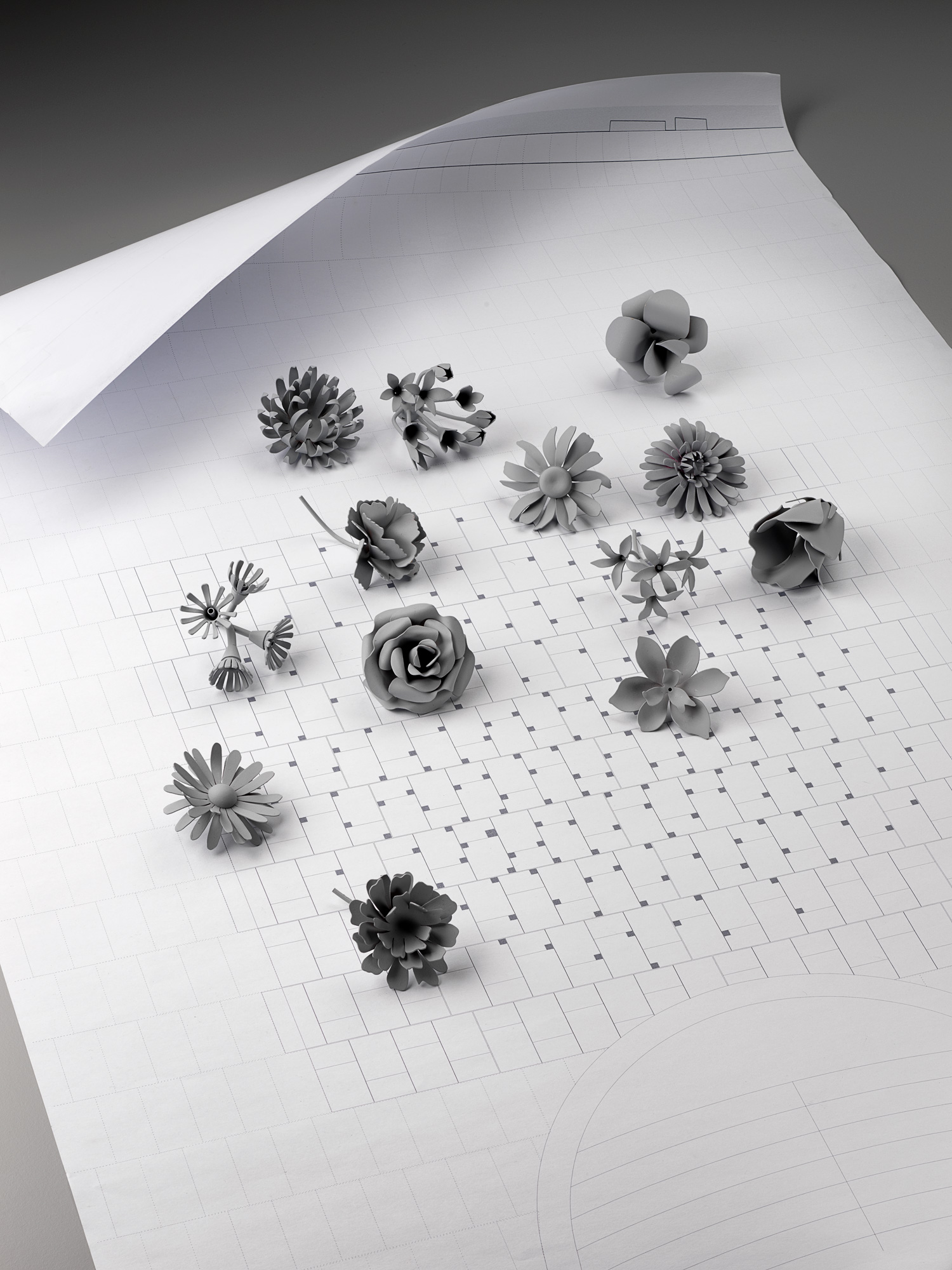
Initial flower models, Grant Hancock
Why are there 210 flowers in this project?
The 210 individual flowers represent the sea of flowers that filled Martin Place in the days and weeks following the siege in December 2014 and capture the carpet of colour and movement of the more than 100,000 bunches. They reference the community’s spontaneous outpouring of grief and compassion in the aftermath of the siege.
The centrepieces of Reflection are a cluster of 5 aqua hydrangeas and another of 5 yellow sunflowers, memorialising the two bright young Australians tragically killed in the siege, Katrina Dawson and Tori Johnson.
200 flowers are arranged in a Starburst pattern radiating out from these two central clusters to form a circle, a field of flowers.

Reflection, Martin Place, 2017, photo Brett Boardman
The 210 flowers are made up of 12 varieties in 19 different colours. Each flower is unique, each cut and formed by hand, creating all these beautiful nuances, little variations, a slightly curled or ruffled petal a bend in the stem etc. Inviting people to spend time looking at individual flowers and exploring their subtle variations.
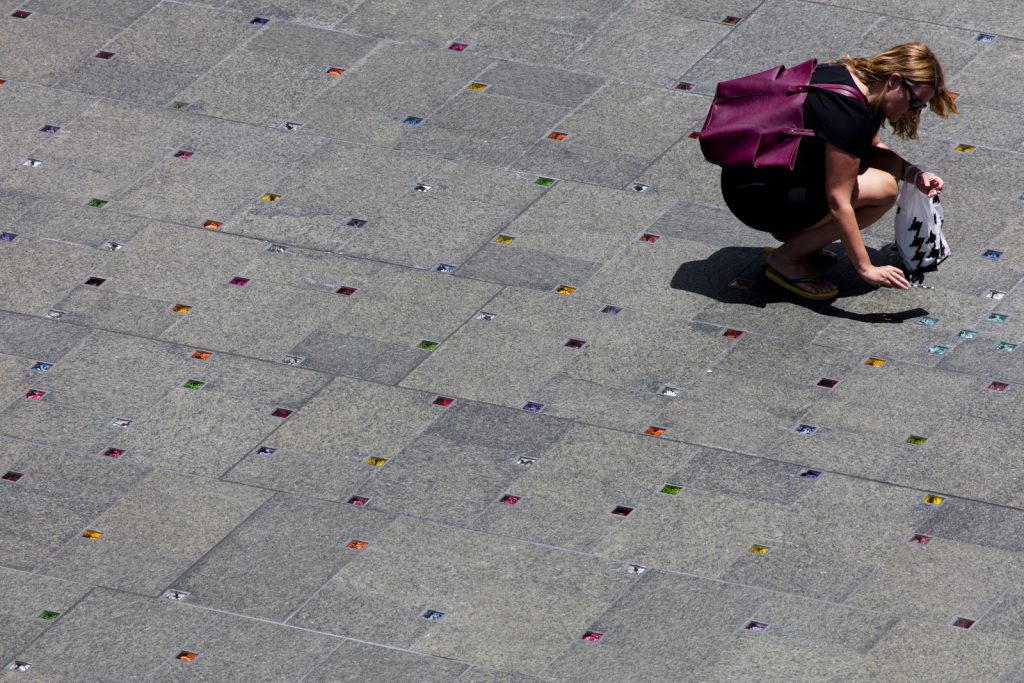
Reflection, Martin Place, 2017, photo Brett Boardman
In two of your series, you use wilting and waning flowers, can you expand on this?
In Thailand I began photographing decaying Phuang Malai that I found in the street, their intended destination unknown to me, perhaps dropped, offered to a spirit house or temple, or strung on a car rear vision mirror. I was intrigued by the brilliant coloured ribbons and decaying, browning petals, flattened by passing traffic, shrivelling in the heat and wondered had these objects reached their intended destination? Someone took care to string these delicate petals and crown flowers together. I marvelled at the journey these objects had taken and what brought them to this place.
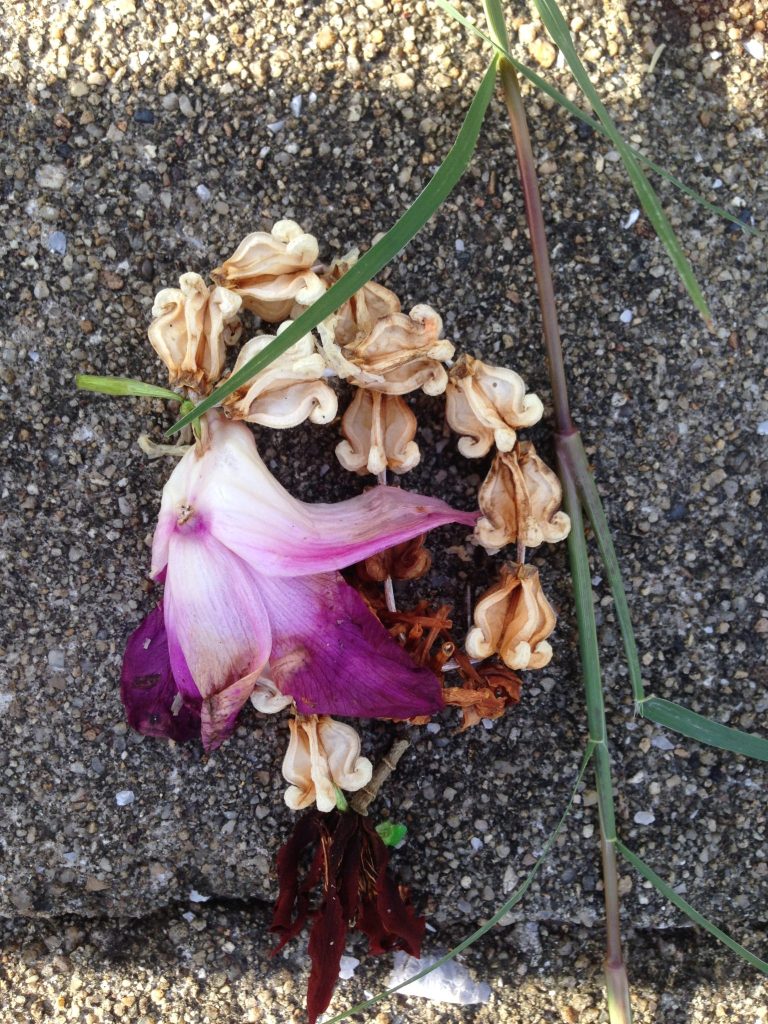
Decaying Phuang Malai, Thailand, 2041, photo Jess Dare
The wilting and waning series of flowers are made of brass, powder coated and scratched back in parts. The colour white references decay, hastening the passage of time, alluding to the disintegration and sun bleaching of the once brightly coloured flowers. After a Phuang Malai is offered it will eventually decay leaving behind only the act of offering, these enduring objects represent this passage.
When you sell a piece for example, from Epicormic and Xylem Series, does you work come with a botanical explanation?
No I don’t provide a botanical explanation, some of the galleries I sell my work in provide an artist statement and of course if anyone asks I am happy to provide that information but I don’t like to over explain work, the titles and artist statements hint at its meaning but I think it’s important for the viewer or owner in some cases to have the space to bring their own interpretation to the work.
You also work with leaves and petals, discuss this in relationship to colour?
I work with all parts of plants, roots and internal structures.
In terms of colour I have been increasingly using white and clear bleached of colour to suggest transience in the way flowers wither, loose colour and die.
Most of your work is very fine and detailed, expand on the importance of ‘less’ in your work?
Actually, I think my glass is very fine, delicate and detailed but my metal pieces are often very minimal, reducing organic forms to more geometric simplified forms.
I choose the material that best suits the concept I am working on or trying to explore.
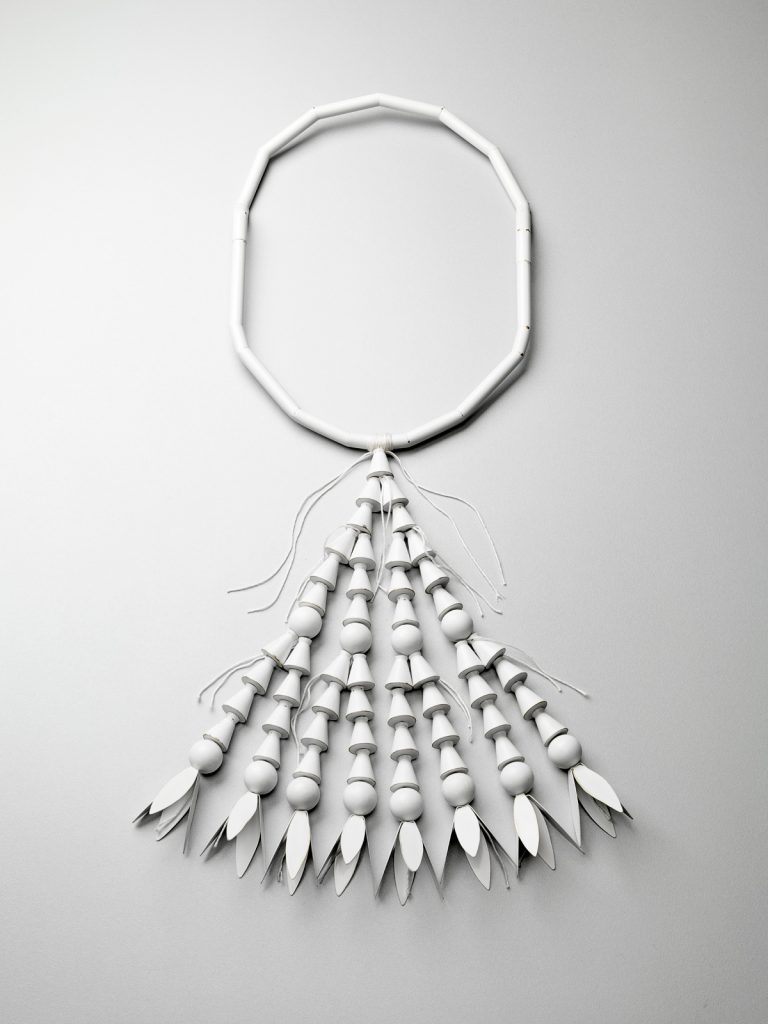
Offerings: Elementary Phuang Malai, brass, copper, cotton thread, 2105, photo Grant Hancock
In terms of ‘Less’, A mentor of mine once said “the art is knowing what to leave off”. I often think about those words, less is more, leave room for the viewer to bring their own interpretation, don’t over explain both literally and visually, I think hints can be more powerful that the glaringly obvious.
Contact details:
Jess Dare
jessdare@bigpond.com
Jess Dare, South Australia, Australia
Interview by Deborah Blakeley, April, 2018
Think a colleague or friend could benefit from this interview?
Knowledge is one of the biggest assets in any business. So why not forward this on to your friends and colleagues so they too can start taking advantage of the insightful information the artist has given?
Other artists you may be interested in:


